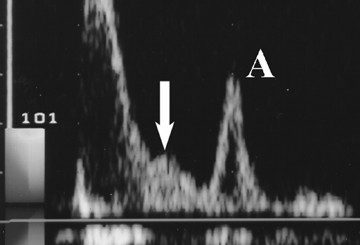Mitral Valve Area is calculated as
Mitral Valve Area is calculated as
Mitral Valve Area is calculated as ‘X’ divided by pressure half-time
[A] 150
[B] 220
[C] 340
[D] 660
Mitral Valve Area is calculated as
- MVA is calculated as 220 divided by pressure half-time,
- 220 being an empirically derived constant
- Pressure half-time – time that it takes the initial transvalvular gradient to fall to half its initial value.

Septal bounce – Cardiology Outlines
Septal bounce Mitral stenosis Septal bounce seen in [A] Mostly in Systole[B] Early diastole[C] Only systole[D] Both systole and diastole ANSWER[B] Early diastole What are the causes of septal bounce? Left bundle branch block ‘Open’ cardiac surgery Septal ischaemia Mitral stenosis Constrictive perica…

Adenomyosis: Best Treatment Options – FEMELIFE
Adenomyosis is different from endometriosis, here the endometrial lining grows into the muscle layers of uterus.





